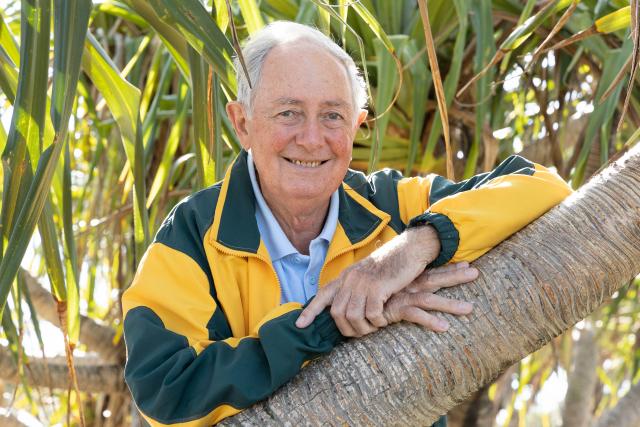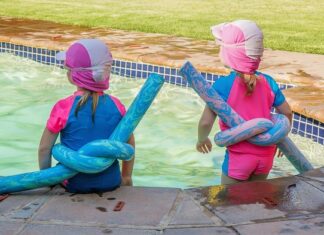The Noosa Biosphere Reserve Foundation this week begins a series of articles in Noosa Today stretching across the next six months as part of its Life in a Living Lab campaign to engage residents and visitors in what happens in a UNESCO biosphere reserve and how we should act within it.
The series begins with a Q&A with Emeritus professor Ian Lowe, a Noosa resident, with a long career in universities, research councils and advisory groups, who chaired the first independent national report on the state of Australia’s environment in 1996 and found that we faced serious problems. Last year he published a book titled Australia on the Brink: Avoiding Environmental Ruin, which paints a dismal picture of the state of our environment but is not without hope for the future.
What’s your connection with Noosa?
I came to the Sunshine Coast 20 years ago when my partner and I moved on from full-time work in Brisbane. That was a lifestyle choice. As well as enjoying the natural areas of Noosa, I frequently play cricket and golf here. I also sing with the Noosa Chorale and enjoy the other cultural activities. For a long time I have held Noosa up as a shining example of a local area that understands the importance of living within the limits of its natural systems. Before UNESCO recognised the Noosa Biosphere Reserve, the Council had explicit policies to limit both residential and tourist developments, aimed at maintaining the glorious natural assets of Noosa.
You’ve spent a career researching and advocating for a sustainable future. Are we making progress?
The contiguous three biospheres – Sunshine Coast, Noosa and Great Sandy Region – constitute a very significant connected area. If we can maintain the principles of living within the limits of our natural systems, we will provide a concrete demonstration to the rest of the country that it is possible to have a sustainable future. The great progress that is being made at our local level is, however, threatened by decision-makers at the State and national level who remain fixated on growth. Sooner or later, we need to recognise that unlimited growth is incompatible with the goal of a sustainable future. The National Strategy for Ecologically Sustainable Development was adopted by CoAG, the Council of Australian Governments, in 1992. Sadly, its sound guidelines for our future have been largely ignored by all the major political parties.
How is Noosa tackling its sustainability or environmental challenges? How could it improve?
Noosa has done very well to resist the pressures from State and Commonwealth governments to promote irresponsible growth. The Council’s regulations for development recognise the importance of maintaining our natural systems. The recently released guidelines for major events, Fifty Shades of Green, provide a framework for minimising environmental impacts. Good work is being done to protect our waterways. We must do more to reduce the impacts of transport, with most journeys being made in inefficient petrol-powered vehicles. A sustainable future will require much more car sharing, more walking and cycling, with improved public transport for longer trips. We need to work with the relevant authorities to improve the frequency and reliability of our public transport services.
Can you explain the concept of a biosphere reserve and what it means in relation to sustainable development?
The idea of a biosphere reserve is that the protected areas such as national parks are complemented by a development approach which prioritises maintaining the integrity of those natural systems. Biosphere reserves have been established to promote a balanced relationship between humans and our natural environment. Rather than seeing environmental protection as an optional extra, less important than economic growth, the concept of a biosphere reserve recognises that our fundamental duty is to protect our natural assets. Our social and economic development needs to be consciously shaped within that priority. The only pattern of development that will be sustainable in the long term is development which maintains the natural systems on which we depend.
Why should residents care about biosphere reserve status? How does it impact them?
The status of a biosphere reserve impacts residents in two ways. First, it maintains the precious natural features which are, for many people, the reason they have moved from other parts of the country to Noosa. Our natural systems provide us with the essentials of life, such as breathable air, drinkable water and the capacity to grow our food. They also give us the joy of beaches and bushland, creeks and cockatoos and koalas, melaleucas and mangroves, streams and scrub turkeys. We have a lifestyle that those who live in concreted suburbs can only dream about. That is, of course, the reason Noosa has a huge tourist industry which is the foundation of our local economy. People want to come here to enjoy for a brief period the lifestyle we take for granted. They will continue to come here, spending their money and providing local jobs, as long as we maintain the natural assets which attract them. In that sense, it is simply enlightened self-interest to focus on our biosphere status. It is the goose that will continue to lay golden eggs if we ensure it stays healthy.
You’ve recently joined the Noosa Biosphere Reserve Foundation board. What do you hope to achieve through this role?
I hope to support the Foundation in its important work of communicating to residents and visitors the principles of the biosphere reserve. Education is a strategic priority of the Foundation, as well as being a guiding principle of UNESCO’s Man and the Biosphere Programme. As an experienced science communicator, I believe I can help explain those principles so that residents and visitors understand our natural surroundings and their role in keeping those natural systems healthy.
The other main task of the Foundation is to sponsor and monitor research aimed at improving our understanding of the local natural systems, especially those critical for our threatened or endangered species. Our biosphere lies at the northern end of the habitat range of species that live in the temperate zone and at the southern end of the habitat range of species that live in the sub-tropical zone. That means we have an unusual richness of species. Within the 875 square kilometres of our biosphere there are an estimated 60 distinct ecosystems. We know of 711 species of native fauna, 1365 plant species and almost half of all the bird species that live in the whole of Australia. There are probably still more plants and animals that our science has not identified. So we have a particular responsibility to conserve the local habitat, which supports many rare and endangered animal species. Most of the damage that has been done to natural systems in the past has been due to ignorance. We are probably still doing needless harm as a result of our limited understanding of the complex natural systems we live in. Knowing more will enable us to live more responsibly.
The NBRF has embarked on an education campaign – Life in a Living Laboratory. Why is this campaign important for our community?
This education campaign is essential to the success of outcomes in our biosphere reserve. We hope to improve understanding of the complex natural systems that support us. Our biosphere contains a rich diversity. As well as our protected areas such as national parks, we have beach-side resort towns, hinterland villages, farming communities and urban areas containing residences, businesses and industries. I have been centrally involved in the international development of the new inter-disciplinary field known as “sustainability science”. It recognises that we can never change just one thing in a complex system. Our actions always have unintended consequences. Our scientific knowledge does not yet enable us to predict in advance all the consequences of our actions. So we are all in a living laboratory: whether we recognise it or not, we are constantly experimenting, making changes that will have a range of impacts. If we understand that, we can try to detect the consequences of our choices and learn how to do things better. We hope to inspire both residents and visitors to improve the ways in which we meet our needs with minimal damage to the natural systems that support us.
What can the Noosa community do to embrace our life in a living laboratory?
We are privileged to live in a rich, diverse and complex biosphere. Everyone who lives here can play a part in actions to protect and celebrate our natural environment. We can all try to reduce waste and unnecessary consumption, to support local producers, to welcome visitors and ensure they understand what a precious region this is. By observing the consequences of our choices, we can go beyond the minimal aim of protecting our natural systems; we can actually improve them, handing them on to future generations in better shape. That is the fundamental goal of the Noosa Biosphere Reserve Foundation: by improving our understanding of the natural systems and our impacts on them, we can move beyond avoiding damage and contribute positively to creating a better future for this precious region.
The Foundation is doing great work, but it struggles to meet all of the community’s legitimate expectations on its limited budget. Its funding from the Noosa Council is supplemented by donations from those who can afford to help. These additions are welcome and make a significant difference.








